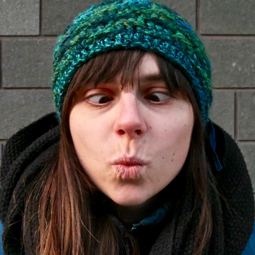I have loved animation from the first day I learned about it during my undergraduate course back home in Germany. Even when I was working in areas like photography and film, animation was always in my head, and I knew I needed to come back to it. That's why I chose to specialise more by signing up for a Masters.
The decision about where to study my MA Animation was not easy, but the content of the modules on offer at Northumbria University convinced me it was the right choice. You have a lot of freedom over what you study and are given the chance to experiment, play around and discover new things. This is quite different from what you can expect in the professional world, and it can also be a relief not to have to work towards clients' desires. You will still get briefs from your lecturers but they are quite open when it comes to the style and look of your project.
It doesn't matter if you've specialised in 2D, 3D, Stop Motion, or if you like to work on a mix of styles. A new experience for me is screenwriting class, where we develop a story and character biographies. We are also offered life drawing classes.



Besides the MA computer lab, you are free to use the one for undergraduates, and there are also stop motion facilities available. You will find a motion capture system and are also allowed to borrow video and photo equipment.

Towards the end of the year you will work on your final project, which you prepare during the spring term. For this project, it is your choice if you want to work in a group or alone.
I chose the Masters in Animation because I wanted to prepare myself for a job in the field. I was interested in learning more about the workflow and expanding my software skills. Working in a proper animation environment also helps to get new inspiration and ideas, and it is very helpful to exchange views on concepts with people that share the same interests as you.
The workload for a postgraduate course can be quite heavy but if you enjoy your subject then it shouldn’t be a problem for you to master it. Nevertheless, don’t forget to have fun whilst expanding your skills and stay curious because that’s the best motivation you can have!


